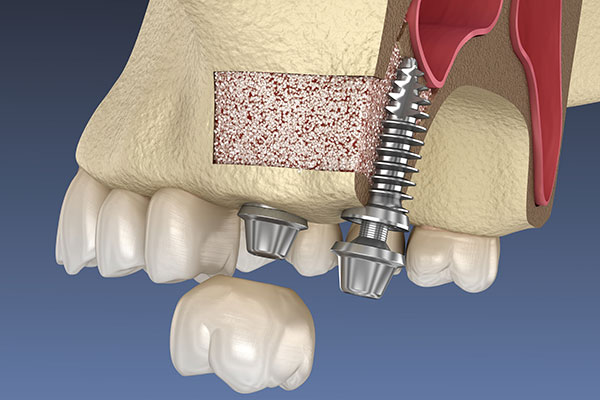Whenever we lose a tooth, our alveolar bone (which is responsible for supporting our teeth) begins a weakening process where it gets significantly reduced.
This is the response of our body to the lack of stimulus that was once provided by the missing tooth in the chewing and biting motions.
The resorption compromises the functionality and aesthetic of our jaw, and patients who suffer from it may not be candidates for dental implants unless they have a bone graft, which is a rather simple procedure where healthy bone tissue is transplanted to rebuild the affected region.
Here at Mountain State Oral and Facial Surgery, we can help your jawbone regrow so you are one step closer to recovering your beautiful smile.
Do I Need a Bone Graft?
If you had a tooth or multiple teeth extracted a long time ago, then you are likely to need a bone graft.
Even a year after a tooth is extracted, up to 25% of our jawbone may shrink. Dental implants are crucial to prevent the resorption from further developing since their titanium roots provide the pressure a healthy jaw demands, but they require space and a strong enough alveolar bone to be placed. A comprehensive consultation is always required, so we can help determine whether you need a bone graft or not. If you do require it, there are actually various bone grafting techniques that suit different cases.
Types of Bone Grafts
A first variation, called socket graft or socket preservation, is applied to patients right after a tooth extraction to cover up the space where a tooth used to be. It considerably reduces the resorption process, so an implant can be safely placed when the exposed socket heals. Patients who already present a noticeable reduction can opt for a block bone graft, where a piece of bone shaped according to the size of the reduced area will be attached to it with tiny titanium screws. The block of bone is usually taken from the chin or the back of the jaw.
Sinus Lift
There is a last type of graft called a sinus lift that is required when the superior premolar or molar teeth are removed, as it causes the sinus membrane to fall downwards, reducing the upper jaw volume as a result.
A sinus lift repositions the membrane back to its place and fills in the gaps with bone graft material.

What to Expect During Recovery
You can expect to feel minimal discomfort and swelling in the grafted area over the first couple of weeks, but the recovery from a bone grafting surgery is usually not painful at all.
Our team may recommend the use of antibiotics to prevent infections and give you instructions on how to keep the area clean. Both socket and block bone grafts tend to restore and fuse with your jaw in four to six months. The sinus membrane can take up to nine months to heal after a sinus lift in certain patients. Ultimately, the amount of graft applied and your natural ability to fuse the bone with the grafting material will determine the healing time.
Bone Graft Charleston WV
Prompt action is crucial to ensure the best possible outcome.
If you would like to learn more about bone grafts or to determine if you may be a candidate for dental implants, contact Mountain State Oral and Facial Surgery at one of our locations near you!

